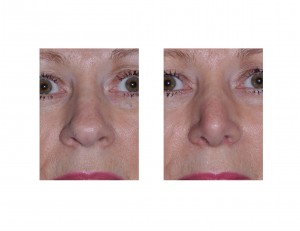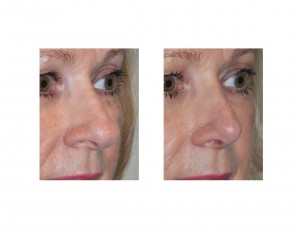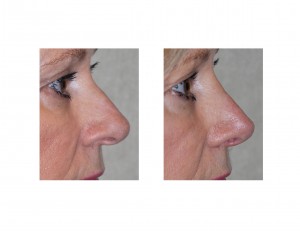Background: There are a wide variety of reasons why people seek out a primary or initial rhinoplasty. Since patients don’t usually know the names of the nasal anatomy or the terminology of the rhinoplasty surgeon, they have to describe their concerns in layman’s terms. Concerns such as a ‘big hump’, ‘fat tip’, or ‘bulbous nose’ are just a few of the most common. Thes descriptions alone makes it easy for the plastic surgeon to almost immediately identify as to the anatomic derangement and a general idea as to what needs to be done.
When prospective patients use the more broad term ‘big nose’ that can imply a variety of structural deformities. For some patients the entire nose is just very big with thick overlying skin. In others only a certain part of the nose is big, usually the tip, and it is out of proportion to the rest of the nose or the face. In many cases, but not all, the overlying nasal skin of the ‘big nose’ is thick…an issue relevant to how successful a rhinoplasty result can be.
Many so-called ‘big noses’ involve a wide and overprojecting nasal tip. The lower alar cartilages have a wide interdomal gap and they are elongated in the cephalic-caudal direction. In addition each dome itself is wide and is the lower alar cartilages elongated. As part of having a long nasal tip the underlying septum is also overgrown or too long.
Case Study: This 50 year-old female had always been bothered by her ‘big nose’. She had wanted a nosejob decades ago but was afraid that her nose would end up being packed and that she would have a lot of pain after surgery from having her nose ‘broken’. These concerns kept her from having the procedure hen she was younger. Now that her children were all grown she decided to do something for herself and do the one thing she had always dreamed about doing.



Case Highlights:
1) Complaints of a big nose often revolve around the size of the nasal tip being wide and long.
2) Tip reshaping is a main element of the big nose rhinoplasty but the structures above the nasal tip must often be modified as well.
3) The amount of structural changes needed to reshape a big nose requires an open rhinoplasty approach.
Dr. Barry Eppley
Indianapolis, Indiana


